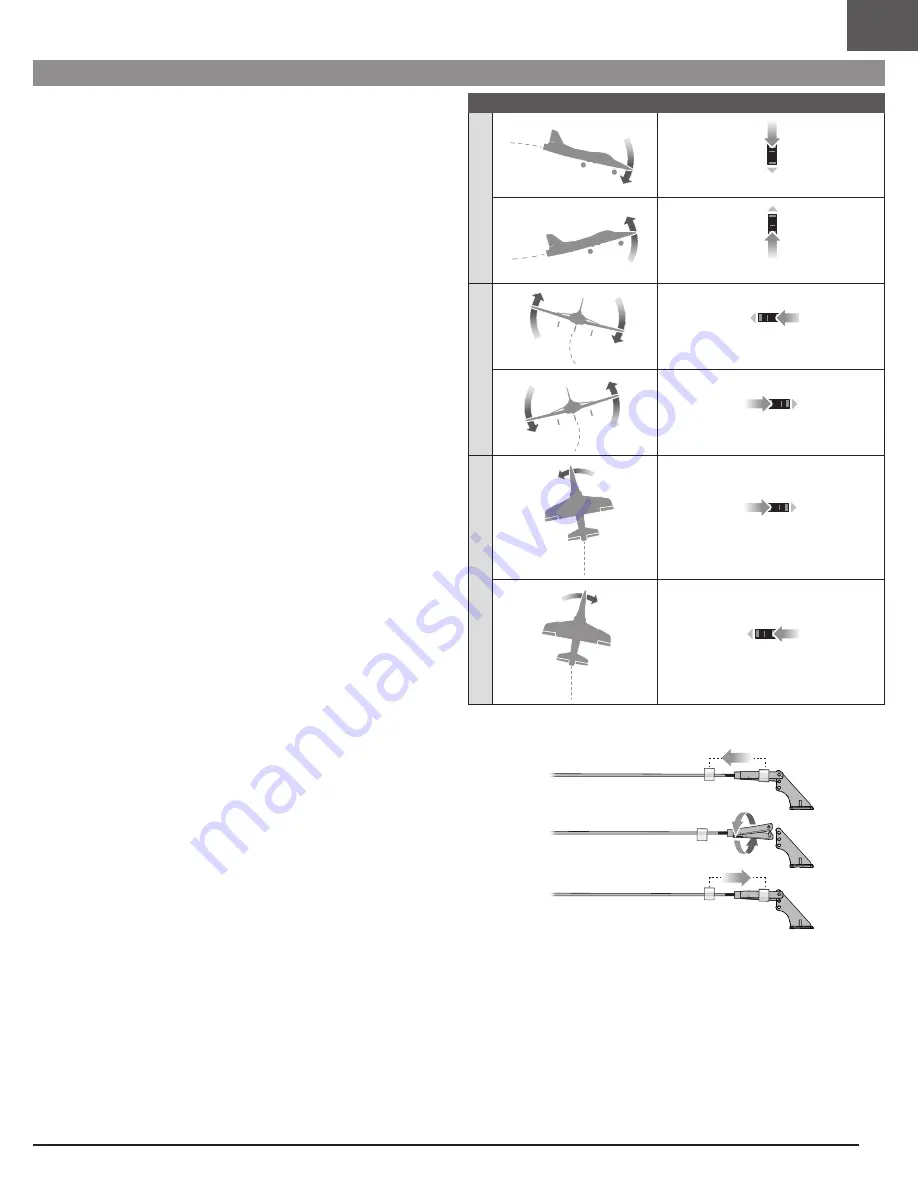
17
EN
Adjusting Trim in Flight
If your aircraft does not fly straight and level at half throttle with the sticks at
neutral, fly into the wind and adjust the trim sliders as indicated in the table until
the aircraft maintains a reasonably straight and level flight path.
• Trimming is best done in calm wind conditions.
• The SAFE flight mode switch should be set to Experienced mode (switch B, position 2)
before adjusting the trims.
After the aircraft is trimmed in flight, land the aircraft and proceed to the Manually
Adjusting Trim section to re-center the servos and set the trim mechanically.
The included DXS transmitter features electronic trim buttons. The transmitter
emits a faint beep with each click of the trim buttons in either direction. Holding
the button in either direction quickly adjusts the trim several steps until the button
is released or until the trim reaches the end of its travel. If the trim button does not
beep when clicked, the trim is at the far end of its travel. Center trim is indicated by
a slightly louder beep.
TIP:
Trim the aircraft at sufficient altitude of about 100' (30 meters). Having
an experienced flight instructor trim your aircraft during the first flight is
recommended.
Aircraft Drift
Trim Required
Elev
ator
Elevator Trim
Elevator Trim
Aileron
Aileron Trim
Aileron Trim
Rudder
Rudder Trim
Rudder Trim
Trimming the Aircraft
Manually Adjusting Trim
After adjusting the aircraft trims in the air, the servos should be re-centered and the
pushrods adjusted to reflect the trim changes made in the air. Doing so ensures the
servos will retain full throw and not overdrive in either direction.
1. After landing from the trim flight, set the throttle cut to ON (switch H, position 1).
2. Set the flight mode switch to experienced mode (switch B, position 2). Ensure
the aircraft is kept immobile.
3. One at a time, take note of any offset in position of each control surface.
4. Remove the clevis from the control horn of the control surface by sliding the
soft rubber tube back along the pushrod. Gently pry the clevis open and slide
the pin out of the control horn.
5. Center the transmitter trim for that control surface.
6. Adjust the clevis in or out by rotating the clevis on the pushrod until the control
surface position matches the corrected offset when the clevis pin is inserted in
the control horn.
7. Re-insert the clevis pin in the correct hole in the control horn.
8. Snap the clevis closed, capturing the control horn between the clevis sides.
9. Slide the soft rubber tube over the clevis to keep it from opening.
10. Move to the next control surface and repeat steps 3 through 9, until all of the
transmitter control surface trims are centered.



























